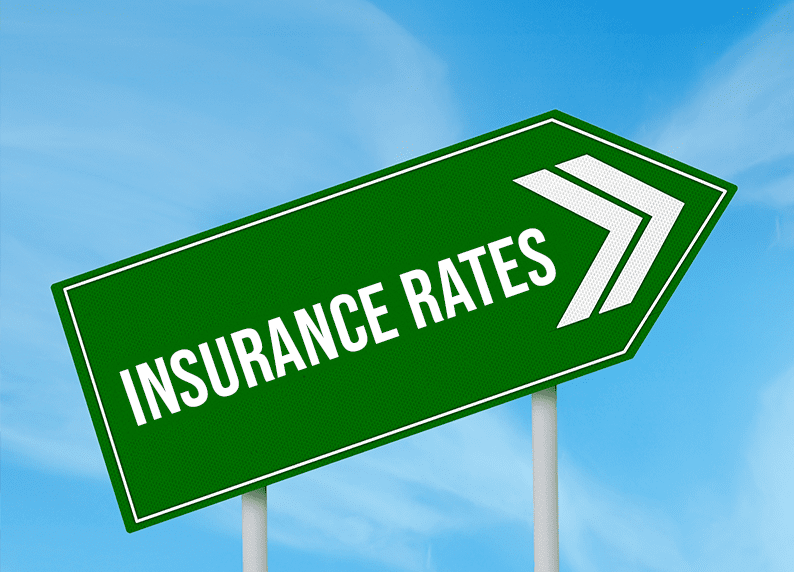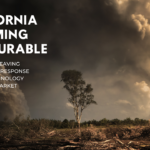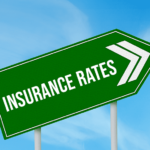In recent years, insurance rates have been steadily climbing, impacting consumers and businesses alike. From auto to home insurance, health to property coverage, premiums are on the rise, leaving many wondering why.
While insurance has always been a dynamic industry, several factors have converged to drive these increases. Understanding the reasons behind the upward trend in insurance rates is essential for consumers and businesses alike to navigate this changing landscape effectively. In this article, we will delve into the key factors contributing to the increase in insurance rates and explore their implications for policyholders.
Increased Frequency and Severity of Natural Disasters
Natural disasters, such as hurricanes, floods, and wildfires, are becoming more frequent and severe due to climate change. These events cause billions of dollars in damages, leading insurance companies to raise their rates to cover the increased risk.
Rising Healthcare Costs
Healthcare costs continue to rise, and this directly impacts health insurance premiums. As medical treatments become more advanced and expensive, insurers need to increase premiums to cover the higher costs of healthcare services.
More Expensive Vehicles
The cost of vehicles has been steadily increasing due to advancements in technology, safety features, and inflation. As a result, insurance companies have to pay out more in claims for vehicle repairs and replacements, leading to higher auto insurance premiums.
Increased Frequency of Auto Accidents
Despite advances in vehicle safety technology, the number of auto accidents has been on the rise. Factors such as distracted driving, increased road congestion, and higher speed limits contribute to this trend. With more accidents occurring, insurance companies are raising rates to cover the higher costs of claims.
Aging Infrastructure
The infrastructure in many countries is aging, leading to an increased risk of property damage from incidents such as burst pipes, collapsing bridges, and electrical fires. Insurance companies raise rates to cover the higher risk of property damage claims resulting from aging infrastructure.
Insurance Fraud
Insurance fraud is a significant problem that costs insurance companies billions of dollars each year. To offset these losses, insurers often raise premiums for all policyholders.
Low Interest Rates
Insurance companies invest the premiums they collect to generate income and pay out claims. However, with interest rates remaining low in many parts of the world, insurers are earning less income from their investments. To compensate for this, they raise premiums to maintain their profitability.
Legal and Regulatory Changes
Changes in laws and regulations can also impact insurance rates. For example, new laws that increase the minimum coverage requirements for auto insurance can lead to higher premiums for policyholders.
Pandemic-related Costs
The COVID-19 pandemic has also had an impact on insurance rates. Insurers faced significant losses due to business interruptions, event cancellations, and an increase in claims related to the virus. To recoup these losses, many insurance companies have raised their rates.
Increased Cost of Reinsurance
Reinsurance is insurance that insurance companies purchase to protect themselves from large losses. However, the cost of reinsurance has been increasing in recent years due to the growing frequency and severity of natural disasters. As a result, insurance companies have to pay more to protect themselves, and they pass these costs on to policyholders through higher premiums.
In conclusion, there are several factors contributing to the increase in insurance rates. While these increases may be frustrating for policyholders, they are necessary for insurance companies to remain solvent and continue to provide coverage in an increasingly risky world. As the landscape continues to evolve, consumers need to stay informed about why these changes are happening and how they can mitigate the impact on their wallets.
Why did my car insurance go up without an Accident?
There are several reasons why your car insurance might have gone up without you having an accident:
- Insurance company rate increases: Insurance companies periodically review their rates and adjust them based on various factors such as the cost of claims, changes in regulations, or economic factors.
- Changes in your driving record: Even if you haven’t had an accident, your insurance rates can still increase if you’ve had moving violations or other infractions on your driving record.
- Changes in the risk profile: Insurance companies may reassess their risk assessment models, and if they determine that drivers like you are now riskier to insure, they might increase rates across the board.
- Changes in the cost of repairs and medical care: Even if you haven’t had an accident, the cost of repairing vehicles and providing medical care for injuries resulting from accidents may have increased in your area, leading to higher insurance premiums.
- Changes in your credit score: In some states, insurance companies use credit scores as a factor in determining insurance rates. If your credit score has decreased, your insurance rates may have increased as a result.
It’s a good idea to contact your insurance company to ask why your rates have increased. They should be able to provide you with an explanation based on your specific circumstances.
Why are home Insurance rates Going up
Home insurance rates can go up for several reasons, including:
- Increase in the cost of construction materials and labor: If the cost of building materials like lumber, concrete, or labor increases, insurance companies may raise rates to cover the potentially higher cost of rebuilding or repairing your home.
- Changes in weather patterns and natural disasters: With an increase in severe weather events such as hurricanes, floods, and wildfires, insurance companies may raise rates to cover the increased risk of damage to homes.
- Rising property values: As property values increase, insurance companies may raise rates to ensure that they can adequately cover the cost of rebuilding or repairing your home in the event of a loss.
- Increase in claims frequency or severity: If there has been an increase in the frequency or severity of claims in your area, insurance companies may raise rates to cover the higher cost of paying out claims.
- Inflation: General inflation can also lead to higher insurance rates as the cost of goods and services increases.
- Changes in regulations: Changes in regulations or insurance laws can also impact insurance rates.
- Improvements or renovations to your home: While this might seem counterintuitive, improvements or renovations to your home that increase its value can also lead to higher insurance premiums, as the cost to repair or replace your home would be higher.
It’s a good idea to contact your insurance company to ask why your rates have increased. They should be able to provide you with an explanation based on your specific circumstances.
What is the most expensive state for Homeowners Insurance?
As of my last update in January 2022, the most expensive states for homeowners insurance in the United States tend to be those prone to natural disasters such as hurricanes, wildfires, and severe weather events.
Based on data from the National Association of Insurance Commissioners (NAIC) and other sources, some of the states with the highest average annual premiums for homeowners insurance include:
- Florida: Florida consistently ranks as one of the most expensive states for homeowners insurance due to its exposure to hurricanes and tropical storms.
- Texas: Texas also experiences severe weather events, including hurricanes, tornadoes, and hailstorms, leading to higher insurance premiums.
- Louisiana: Louisiana’s vulnerability to hurricanes and frequent severe weather contributes to higher homeowners insurance premiums in the state.
- Oklahoma: Oklahoma experiences frequent severe weather events, including tornadoes and hailstorms, which can lead to higher insurance premiums.
- Mississippi: Mississippi’s susceptibility to hurricanes and tropical storms contributes to higher homeowners insurance premiums.
However, please note that insurance rates can vary significantly based on factors such as the location of the property, the age and condition of the home, the coverage limits, and the insurance provider. It’s essential to get quotes from multiple insurance companies to find the best rate for your specific situation.
How much is Homeowners Insurance per Month?
The cost of homeowners insurance can vary significantly depending on various factors such as the location of the home, the value of the home, the coverage amount, the insurance company, and the policyholder’s claims history, credit score, and more. On average, homeowners insurance can range from $50 to $200 per month in the United States. However, it’s essential to get personalized quotes from insurance providers to get an accurate estimate based on your specific circumstances and needs.
Conclusion:
In conclusion, the factors driving the increase in insurance rates are complex and multifaceted. From natural disasters and climate change to rising healthcare costs and technological advancements, the insurance industry is facing unprecedented challenges. While these rate hikes may be frustrating for consumers and businesses, understanding the underlying reasons can help policyholders make informed decisions and take proactive steps to mitigate their impact. As the insurance landscape continues to evolve, staying informed and regularly reassessing insurance needs will be crucial for individuals and businesses alike to navigate these changes effectively.
Also read more articles: How to Unlink Threads From Instagram







